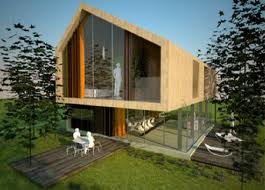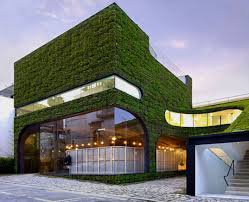In the present age where everyone is concerned about going green and sustainable living, since people have realized that contrary to popular belief, it not only means doing your bit for the environment, but it also turns out to be cheaper, not steeper on your pocket! So you must be wondering where to start from; apart from the normal simple things that any Eco conscious person incorporates into their daily life. Why not start from the place where we go from and come back to everyday? Our own homes! Introducing architecture with a conscience- Green architecture! Architecture is not only about designing places that people want to see; it’s about designing things that last an eternity…it’s something making something that is futuristic! Considering that going eco-friendly is the new cool, it’s a pretty fantastic idea to incorporate it into buildings and homes as well! Not only does it sanction the need to protect the environment, it makes for a great marketing strategy too!
The principles to make this kind of an idea require certain base rules, around which the technology can be incorporated. Water conservation, energy efficiency, low environmental impact, using recycled material, sustainability, waste reduction and being economically feasible are a few must-haves for this to be considered a good idea. After all, it should not only be for people who have the funds to invest in it, we are looking at building sustainable cities for the masses! Solar energy is the new hot-shot idea which comes to mind first, so enabling solar panels for energy production in both homes and offices is a great idea. Although the initial setting up cost is high, after that it’s completely free. Similarly, harvesting wind energy in places that have a lot of air current is a good idea. Use of low power computers and dimming devices and air conditioners that sense the motility in the room and use power accordingly is being recommended, along with using energy saving lights like CFLs and LEDs instead of conventional bulbs and tubes.
Installation of water conserving devices like community rainwater harvesters, low flow flushes and faucets and inclusion of more amount of water permeable landscapes like gardens will go a long way in conserving whatever little freshwater is left available to us. Using certified wood for sustain-ably maintained forests, using VOC-free compounds as paints, varnishes and adhesives, using materials that allow the walls to “breathe”, using solid timber rather than composite sheet material, using gypsum-based wall and ceiling linings, using tiles and linoleum since they are comparatively natural substances… these are all easy to do things that can be followed not only by individuals, but to build a community or a complex as a whole! Using straw and bamboo since they are high renewable and absolutely natural is a great alternative to its synthetic derivatives.
Recycled concrete, carpet-material and stone is also a way to avoid the problem of disposal of so much building material. Placing dustbins at every few corners of the compound is one absolutely essential addition to the list, which has anyway been done in most places. Terracotta floors and fly ash bricks as construction materials are extremely eco-friendly, not to mention that they give the interior a completely tip-top and stylish look! Large and well-insulated windows look good, plus they let fresh air in giving the place a more healthy and natural finish. Fly-ash, Portland cement and binders are environment friendly materials that are easy to procure along with being quite cheap as well. In any case, going an extra mile to preserve your planet is not really asking for much, is it? Anyway, they are quite cheap as well, giving you not only an unexpected bonus but also a sense of satisfaction that is hard to replicate!
Apart from the job of the constructors and architectures, a complex can only be made truly eco-friendly if the effort is replicated by the populace of the territory. Making our own individual effort to help the place become more sustainable is something that goes a long way in breaching the issue. The basic concept of reduce, reuse and recycle is something that has been taught and iterated over and over again and is quite well-known even to kids. Inculcating these manners and a sense of environmental consciousness in children is very important, as they learn and pick up whatever the see.
Everybody can do their bit and if aware of the consequences, most people will! It also adds a certain elegance and style to the place, since most people are endorsing the importance of living in harmony with the environment. A small kitchen tip that is extremely easy and not only reduces waste, but makes it useful as well is using vegetable residues and fruit peels as fertilizers for the plants in the community garden or even in your flowerpots! It not only helps you in disposal, but is a nitrogenous treat for your plants as well! So here’s to giving way to a cleaner, greener and more breathable environment!
PS: Mumbai has loosely about 30% buildings which are built in a green and sustainable way. One up for the city!



Leave a Reply